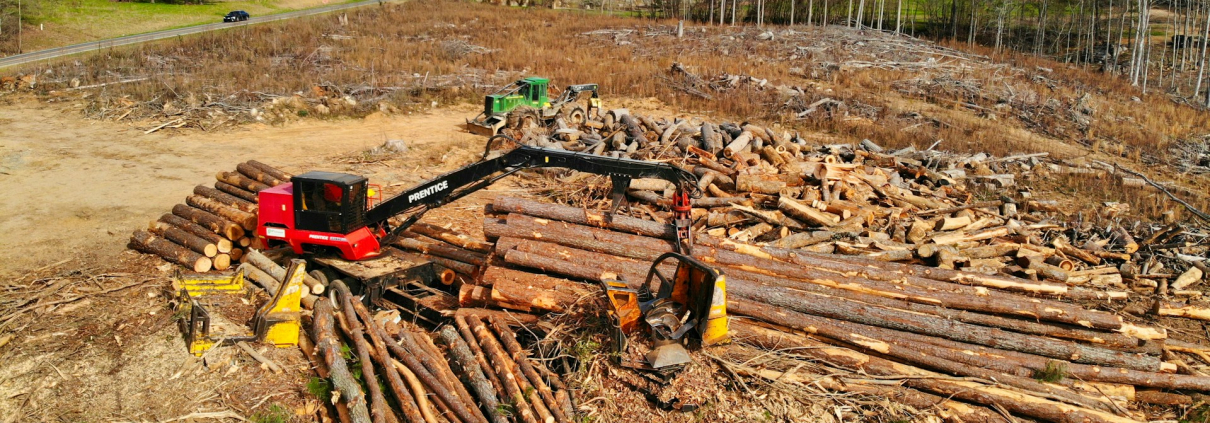Optimal Land Clearing: Timing Tips and Expert Advice
Land clearing is an important step when you’re preparing for construction, farming, or even creating a lovely garden. It involves removing trees, bushes, and other growth to make the land ready for use. Knowing when to clear your land can make a big difference in how smoothly your project goes.
Choosing the best time for land clearing depends on a few important factors. The weather, environment, and your project goals should all play a part in your decision. Picking the right moment can save you time and money while making sure the land is cleared safely and effectively. In this guide, we’ll help you figure out the best time to tackle your land clearing project.
Factors to Consider Before Starting Land Clearing
Land clearing is a big job that requires careful planning. Before starting, there are several important factors to consider to ensure the process goes smoothly and safely.
– Purpose of Clearing: Understand why you need to clear the land. Is it for building, farming, or simply for aesthetic purposes? Knowing the purpose helps determine the extent of clearing required.
– Land Type and Terrain: Assess the type of land and its terrain. Flat land may be easier to clear than hilly or rocky areas, which can require specialised equipment and skills.
– Existing Vegetation: Identify the types of trees and plants on the land. Some might be protected by law, or they might require specific methods to remove.
– Weather Conditions: Check the local weather forecast. Rainy seasons can make the ground soft and machinery difficult to use, while dry seasons may carry risks of dust and fires.
– Access to the Site: Consider how easy it is to reach the land with all the necessary equipment. Difficult access can increase time and costs.
– Budget Constraints: Estimate costs before beginning. Proper budgeting helps in choosing the right services without unexpected expenses.
By taking these factors into account, you can plan your land clearing effectively, saving time and avoiding potential issues.
Seasonal Impacts on Land Clearing
The time of year plays a significant role in land clearing, affecting both the process and the outcome. Different seasons bring unique challenges and benefits that should be considered in your planning.
– Winter: Cold and wet conditions can make the ground hard and difficult for machinery to operate. However, winter usually means less foliage, making it easier to see the land’s layout.
– Spring: As plants begin growing, the ground may be softer, allowing for easier digging and clearing. Be mindful of weather patterns like rain, which can delay work.
– Summer: Dry conditions make the ground firmer, which is good for heavy machinery. However, high temperatures can lead to work slowdowns and increased dust and fire risks.
– Autumn: Falling leaves can obscure the land, but cooler temperatures are ideal for labour. It’s also a good time to prepare land for planting or building activities.
Take seasonal impacts into account when scheduling your land clearing. Timing the work appropriately can lead to a more efficient process and better results, ensuring you meet your clearing goals effectively.
Environmental Considerations and Regulations
Land clearing involves more than just removing trees and vegetation; it impacts the natural environment and requires careful attention to regulations. Prior to beginning any land clearing project, it’s vital to consider the environmental consequences and comply with legal requirements.
1. Understand Protected Areas: Identify any protected habitats or endangered species that might be present on the land. Clearing such areas could lead to significant ecological disruption.
2. Check Local Regulations: Different regions have rules about which trees and plants can be cleared. Contact local authorities to understand permits required and any legal restrictions.
3. Minimise Soil Erosion: Removing trees and plants can result in erosion if not managed properly. Implement strategies such as silt fencing or planting ground cover to protect the soil.
4. Assess Water Impact: Clearing land near water bodies might affect water quality. Proper buffers and erosion controls will help prevent sediment runoff into streams or lakes.
5. Plan for Waste Management: Decide how to handle the cleared vegetation. Options include mulching, composting, or using the debris for other ecological benefits.
Before starting your project, ensure you respect environmental guidelines and laws. This not only preserves the natural landscape but also protects you from potential fines or legal issues.
Preparing for Specific Land Clearing Goals
Different land clearing projects require tailored approaches based on the intended end use. Clearly define your goals before starting to ensure a smooth process and satisfactory results.
– Agricultural Land: If your goal is farming or crop production, focus on clearing areas efficiently while leaving beneficial windbreaks and shade trees intact. Plan soil preparation and irrigation systems accordingly.
– Construction Sites: For building projects, ensure a clear and stable site by removing obstructions. Level out the land and install necessary infrastructure like roads or paths early in the process.
– Recreational Spaces: When creating parks or trails, balance clearing with preserving natural beauty. Retain some trees and native plants for shade and scenery.
– Firebreaks: In fire-prone areas, creating firebreaks can protect properties. Remove underbrush and reduce fuel sources around structures while maintaining essential vegetation for erosion control.
Matching your approach to your specific goals ensures the land serves its purpose effectively, benefiting users and the environment.
Conclusion
Approaching land clearing with a thoughtful plan is essential to achieving your objectives while minimising harm to the environment. Considering both regulations and specific goals helps in executing a successful project. Keeping a balance between progress and conservation ensures that the cleared land meets its intended purpose. Every step in your land clearing process, from planning to execution, plays a critical role in both the short-term and long-term success of your endeavours.
If you are planning a land clearing project and need expert guidance, TPS Tree Services is ready to lend a hand. Our professional team is dedicated to helping you achieve your goals effectively and sustainably through our tree clearing services. Let TPS Tree Services support your vision with our reliable and experienced services today.




